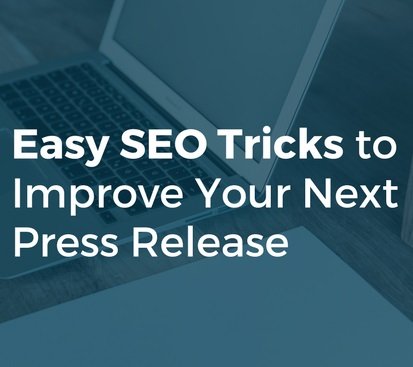Easy SEO Tricks to Improve Your Next Press Release
 Peter Mathewson, SEO Specialist, CisionUnless you’ve been living under a rock for the past decade or so, you probably already know something about the importance of search engine optimization. What you may not know is that practicing good SEO is just as essential for your press releases as it is for the rest of your online communications.Underscoring this, consider that the number of readers who were referred to our site directly from Google has nearly doubled since the start of 2017. In other words: neglect SEO at your own risk.While that may sound ominous, the good news is that practicing good SEO with your press releases is virtually free and, when done right, can immediately add value to communications you were going to issue anyway.To help lift the veil on SEO, I’ve put together five quick tips that you can use to help improve the search engine performance of your press releases.
Peter Mathewson, SEO Specialist, CisionUnless you’ve been living under a rock for the past decade or so, you probably already know something about the importance of search engine optimization. What you may not know is that practicing good SEO is just as essential for your press releases as it is for the rest of your online communications.Underscoring this, consider that the number of readers who were referred to our site directly from Google has nearly doubled since the start of 2017. In other words: neglect SEO at your own risk.While that may sound ominous, the good news is that practicing good SEO with your press releases is virtually free and, when done right, can immediately add value to communications you were going to issue anyway.To help lift the veil on SEO, I’ve put together five quick tips that you can use to help improve the search engine performance of your press releases.
1. Keep Content Relevant, Readable And Newsworthy
While SEO is an excellent tool for enhancing the visibility of online material, the hard truth is that even the best SEO won’t get readers to engage with content that’s just not that interesting. It is therefore imperative that you create content with your reader in mind from the outset.Before you’ve started to write, ask yourself: what is it about this announcement that my readers will find compelling? What question is this press release answering?This might seem like an essential point, but it is central to modern SEO. Google and other search engines have developed algorithms to more highly rank content which best answers user queries. On top of this, content which inspires real engagement — measured in clickthroughs, shares, tweets, repostings, etc., gets a significant boost on the search engine results page.
2. Pick Your Keywords
If you’re looking to optimize content of any kind, keyword selection needs to be top of mind.To start, ask yourself what some of the main topics that your release discusses are. Next, put yourself in the shoes of someone searching for your release. What terms will they use to find it?If you need help, there are plenty of online resources that will help you find the right keywords. You might also like this post on building a keyword library.
3. Create Sharable Headlines
Now that you have your topic and keywords, it’s time to write your headline.From an SEO perspective, the headline is the most essential part of a successful press release. Not only is it the first thing your readers will see, but, in a digital age where attention itself is a commodity, it might be the only thing your reader bothers to read at all.Your headline should be informative and written in natural language that is free of jargon —unless you’re writing your press release for a particular audience. This will maximize the number of readers who will be able to engage with your material.It should also:
- Include your most critical keywords.
- Be shareable across social platforms. Keep in mind with Twitter moving to 280 characters that many legacy users will keep to 140.
- Include the heart of the story, and your most important keywords, in the first 55-70 characters, for clarity in search engine results pages.
- Contain a number (if appropriate), as headlines containing numbers have been shown to do better than those that don’t.
If necessary, feel free to use a sub-headline to provide additional information or keywords.
Continue reading here on BEYOND PR.

